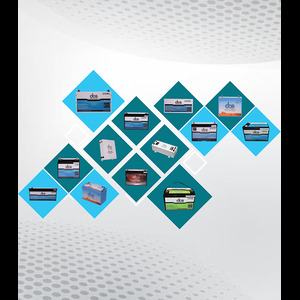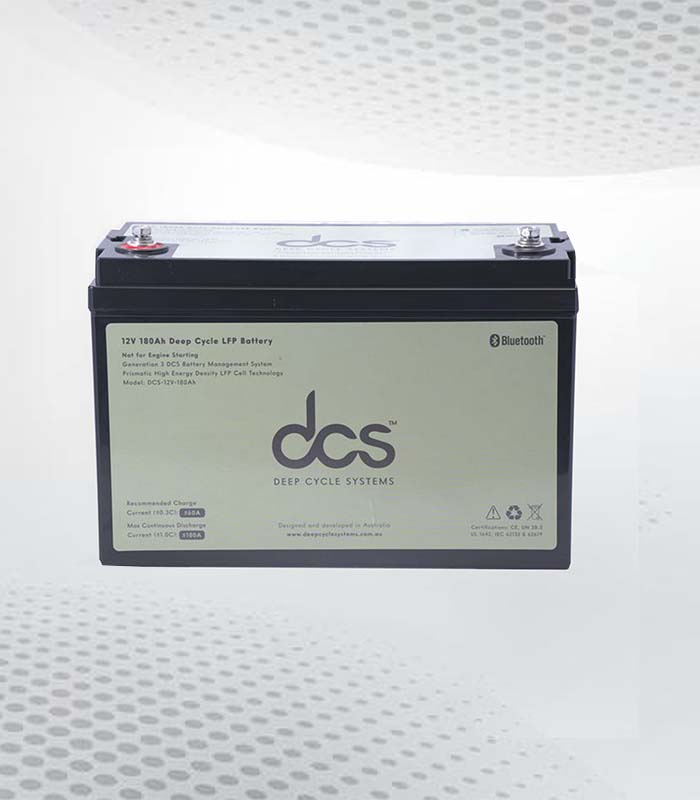When you turn the key in your Hyundai IX35, there’s a symphony of mechanical parts working harmoniously to get you moving. At the heart of this operation lies a crucial component: the fuel pump. Without it, your engine would struggle to perform, leaving you stranded and frustrated. Understanding how the Hyundai Ix35 Fuel Pump functions can empower you as a driver. It not only enhances your vehicle’s performance but also ensures that every journey is smooth and trouble-free. Let’s dive into what makes this part so essential for keeping your engine running like clockwork.
Introduction
The Hyundai IX35 is a popular SUV known for its reliability and performance. A crucial component that contributes to this smooth operation is the fuel pump. Understanding how it works can help you appreciate your vehicle even more.
The fuel pump’s main job is to transport gasoline from the tank to the engine. This process ensures that your car has a steady supply of fuel, allowing for optimal combustion and efficient driving experiences. Without it, your Hyundai IX35 would struggle on the road.
Regular maintenance of this component plays a significant role in keeping your engine running smoothly. Knowing what signs to watch out for can save you time, money, and frustration down the line. Let’s explore how essential this small yet mighty part really is!
What is a Fuel Pump and Its Function?
A fuel pump is an essential component of your vehicle’s fuel system. It is responsible for delivering gasoline or diesel from the tank to the engine at the right pressure. This process ensures that your Hyundai IX35 operates efficiently.
There are two main types of fuel pumps: mechanical and electric. Mechanical pumps usually rely on engine vacuum, while electric pumps use motor-driven mechanisms. Most modern vehicles, including the IX35, utilize electric fuel pumps due to their reliability and efficiency.
The proper functioning of a fuel pump is critical for optimal engine performance. If it fails, you may experience issues such as poor acceleration or difficulty starting your car. Keeping this component in top condition helps maintain smooth driving experiences and prolongs engine life.
How the Fuel Pump Operates In Your Hyundai Ix35 Fuel Sender
The fuel pump in your Hyundai Ix35 Fuel Sender plays a vital role in delivering fuel from the tank to the engine. It operates by creating suction, drawing gasoline into the pump and pressurizing it as it moves through the system. This ensures that there is a steady flow of fuel ready for combustion.
Within this process, the electric motor drives a small impeller or diaphragm, responsible for pushing fuel through the lines. The pump maintains consistent pressure to ensure optimal performance during various driving conditions.
Additionally, modern fuel pumps are equipped with filters to catch debris and contaminants before they reach your engine. This not only helps maintain efficiency but also protects critical components from damage caused by impurities in the fuel supply.
The Role of the Fuel Pump in Engine Performance
The fuel pump plays a vital role in maintaining optimal engine performance in your Hyundai IX35. It ensures that the right amount of fuel reaches the engine at the correct pressure, creating an efficient combustion process. Without a functioning fuel pump, your vehicle can struggle to operate effectively.
When you accelerate or climb hills, the demand for fuel increases. The fuel pump swiftly adapts to deliver more gasoline when needed, ensuring smooth transitions and powerful responses from your engine. This adaptability is crucial for enjoying a dynamic driving experience.
Moreover, consistent pressure from the fuel pump helps maintain proper air-fuel mixtures within the combustion chamber. This balance is essential not just for power but also for emissions control and overall efficiency—factors that contribute significantly to how well your Hyundai IX35 performs on the road.
Signs of a Failing Fuel Pump
A failing fuel pump can lead to a range of performance issues in your Hyundai IX35. One of the first signs is difficulty starting the engine. You might notice that it takes longer to start, or it may even fail to crank altogether.
Another common symptom is a loss of power during acceleration. If you feel a sudden drop in power when pressing the gas pedal, it could indicate that your fuel pump isn’t delivering enough fuel to the engine. This situation often makes driving frustrating and less enjoyable.
You may also experience engine stalling or surging while on the road. These erratic behaviors are alarming and usually signal an urgent need for inspection. Unusual noises coming from the fuel tank—like whining or sputtering—can further confirm that something’s off with your Hyundai IX35’s fuel pump system.
Difficulty Starting the Engine
Difficulty starting your Hyundai IX35 can be frustrating. When the fuel pump isn’t delivering enough fuel to the engine, you may find yourself turning the key multiple times with little to no response. This can lead to wasted time and an anxious wait.
If you notice that your vehicle struggles to start or requires several attempts before it roars to life, it’s a sign of potential fuel pump issues. A failing pump may not create adequate pressure, which is essential for proper combustion in the engine’s cylinders.
Ignoring this problem could lead to further complications down the road. It’s crucial to address these symptoms early on by getting your vehicle checked out at a professional service center. Keeping an eye on how easily your car starts can save you from more significant headaches later.
Loss of Power during Acceleration
Experiencing a loss of power during acceleration in your Hyundai IX35 can be concerning. This issue often stems from a malfunctioning fuel pump, which is crucial for delivering the right amount of fuel to the engine. When the pump struggles, it can’t provide sufficient fuel pressure, leading to poor engine performance.
As you press down on the accelerator pedal, you may notice that your vehicle hesitates or fails to respond as expected. This lag can make driving frustrating and even dangerous if you’re trying to merge onto busy roads or navigate steep hills.
Ignoring this warning sign could lead to more significant problems down the line. A compromised fuel pump not only affects acceleration but can also contribute to other issues like stalling or reduced efficiency. Addressing these symptoms early is essential for maintaining a smooth ride in your IX35.
Engine Stalling or Surging
Experiencing engine stalling or surging in your Hyundai IX35 can be alarming. This issue often signals that the fuel pump may not be delivering an adequate supply of fuel to the engine. When this occurs, you might notice fluctuations in acceleration or a sudden loss of power while driving.
Stalling can happen at any speed, particularly during idling or low-speed conditions. It feels like the vehicle is losing momentum for no apparent reason. On the other hand, surging causes unexpected bursts of speed despite consistent pressure on the accelerator pedal.
Both symptoms indicate potential problems with your Hyundai IX35’s fuel system. Ignoring these signs could lead to more severe issues down the line and affect overall performance and safety on the road.
Unusual Noise from the Toyota Hilux Fuel Pump
If you hear an unusual noise coming from your fuel tank, it’s a sign that something might be amiss with the Toyota Hilux Fuel Pump. These sounds can range from whining to rattling, indicating potential issues within the system.
A consistent high-pitched whine could suggest that the pump is struggling to draw fuel efficiently. This struggle often results from wear and tear or debris blocking the intake filter. If ignored, this may lead to more serious problems down the line.
On the other hand, if you’re hearing clunking or knocking noises, it could indicate loose components or even internal damage within the fuel pump itself. Addressing these sounds promptly can help prevent further complications and costly repairs. Staying vigilant about these auditory cues is crucial for maintaining your vehicle’s performance.
How to Diagnose Fuel Pump Issues
Diagnosing fuel pump issues in your Hyundai IX35 can save you from costly repairs. Start by checking the fuel gauge. If it reads empty and you’ve recently filled up, that could indicate a problem with the fuel sender unit or pump.
Next, listen for sounds when you turn the ignition key to the “on” position. You should hear a soft whirring noise from the fuel tank area—this means the pump is working. If there’s silence, it might be time to investigate further.
Monitor your engine’s performance during acceleration. A lack of power or stalling may suggest insufficient fuel delivery. Performing these simple checks can help pinpoint potential fuel pump problems early on, preventing more severe damage down the line.
Steps To Replace a Faulty Hilux Workmate Fuel Pump
Replacing a faulty Hilux Workmate Fuel Pump can be a straightforward process if you follow the right steps. Begin by ensuring safety; disconnect the battery to avoid any electrical mishaps. Then, relieve pressure in the fuel system by removing the fuel pump relay and starting the engine until it stalls.
Next, access the fuel pump located within or under the vehicle’s gas tank. Depending on your model, you may need to drop the tank or remove an access panel inside the trunk. Carefully detach all electrical connectors and hoses connected to the old pump before removing it completely.
Once removed, install your new Hyundai IX35 fuel pump by reversing these steps. Ensure that all connections are secure and double-check for leaks after reassembling everything. Reconnect your battery and test drive to confirm proper function.
Maintaining Your Fuel Pump for Longevity
Keeping your Hyundai IX35 fuel pump in top shape is essential for optimal performance. Regular maintenance can help avoid costly repairs down the line. Start by ensuring that you use high-quality fuel. Poor-quality gasoline can introduce contaminants, leading to premature wear.
It’s also beneficial to replace your fuel filter at recommended intervals. A clogged filter forces the pump to work harder, which can shorten its lifespan. Inspecting and replacing this component regularly will keep everything flowing smoothly.
Pay attention to any warning signs like unusual noises or a drop in engine performance. Addressing these issues swiftly helps maintain not just the fuel pump but overall engine health as well. Consistent care goes a long way in maximizing the longevity of your vehicle’s vital components.
OEM Vs. Aftermarket Fuel Pumps: What to Consider
When choosing between OEM and aftermarket fuel pumps for your Hyundai IX35, several factors come into play. OEM (original equipment manufacturer) fuel pumps are designed specifically for your vehicle model. They often guarantee a perfect fit and reliable performance, as they meet the same stringent standards set by the manufacturer.
On the other hand, aftermarket fuel pumps can be more cost-effective but vary widely in quality. Some may offer superior performance or additional features that enhance engine efficiency. However, others might compromise on durability and reliability.
It’s essential to research brands and read customer reviews when considering an aftermarket option. Weigh the benefits of warranty coverage against potential savings to find what suits your needs best while ensuring optimal function for your Hyundai IX35’s engine system.
Conclusion
Understanding the importance of your Hyundai IX35 fuel pump is essential for maintaining optimal engine performance. This small yet powerful component plays a crucial role in ensuring that fuel reaches the engine efficiently and reliably.
Regular maintenance checks can help you identify potential issues before they escalate into bigger problems. Keeping an eye on signs like difficulty starting or unusual noises will allow you to address any concerns promptly.
Investing time and effort into your vehicle’s care not only enhances its longevity but also ensures a smoother driving experience. Whether you’re considering OEM or aftermarket options, make informed choices to keep your Hyundai running at its best.
FAQs
What is a fuel pump’s role in my Hyundai IX35?
The fuel pump delivers gasoline from the tank to the engine, ensuring proper combustion.
How do I know if my fuel pump is failing?
Look for signs like difficulty starting your vehicle, loss of power during acceleration, or unusual noises coming from the fuel tank.
Can I drive with a faulty fuel pump?
It’s not advisable. Continuing to drive can lead to further damage and may leave you stranded.
How much does it cost to replace a fuel pump in a Hyundai IX35?
Prices vary based on parts and labor but expect somewhere between $400 and $900 depending on where you go for service.




